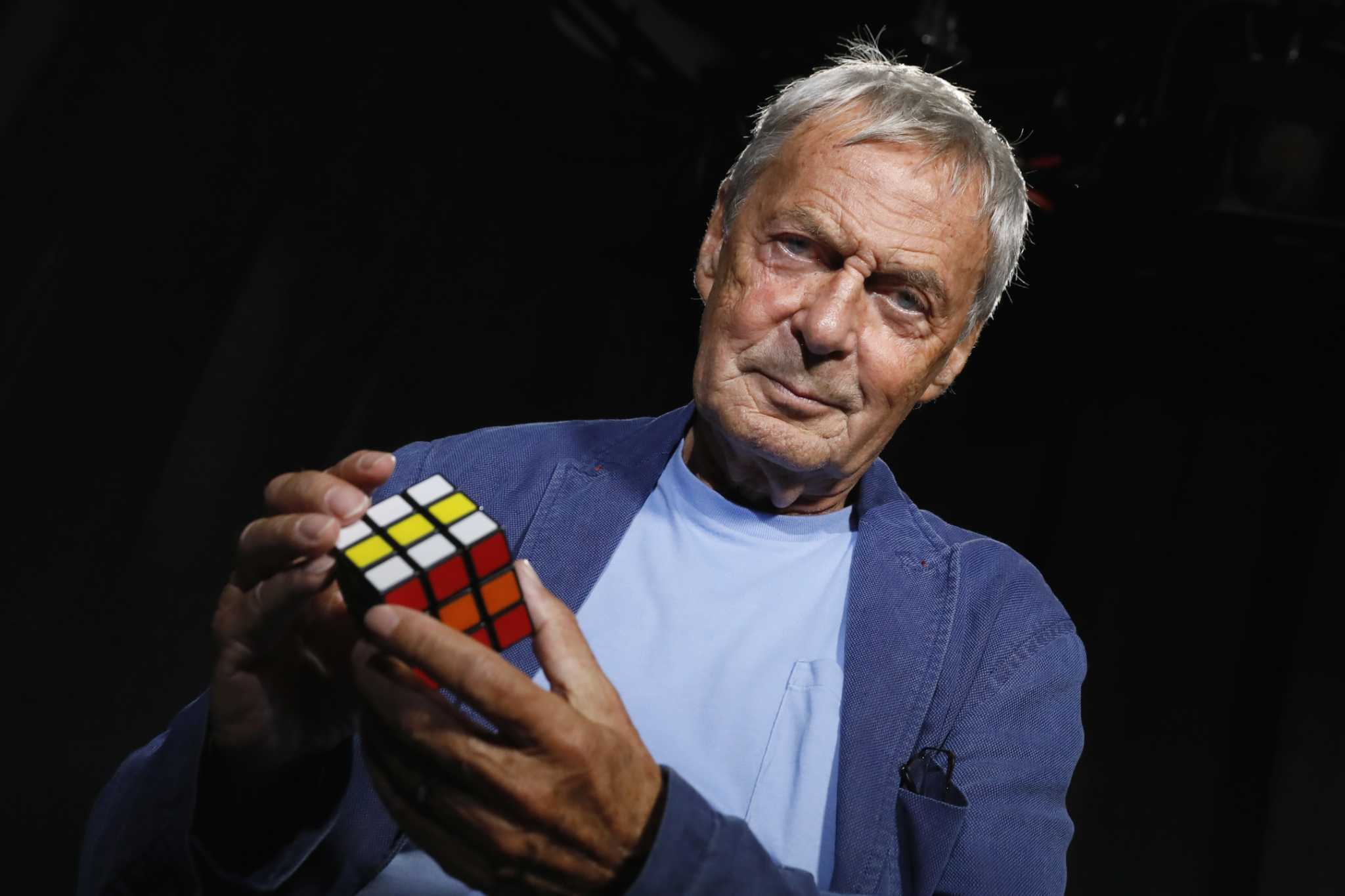[ad_1]
NEW YORK (AP) — If you’ve ever had trouble solving a Rubik’s Cube, a good piece of advice is to break it down into steps. It’s worth a shot: That advice is from the man who invented it.
“Problem solving is a very basic activity of the human mind and if a problem is complex you need to divide the problem into smaller elements,” says Ernő Rubik, who invented the cube in 1974.
Rubik has seen his color-matching puzzle go from a classroom teaching tool in Cold War-era Hungary to a worldwide phenomenon with over 450 million cubes sold and a mini-empire of related toys.
“For me, the cube represents what freedom means. Freedom is never endless,” he said during a recent visit to New York. “It lets you do what is necessary to achieve your goal.”
The original 3×3 Rubik’s has more than 43 quintillion — that’s more than 43,000,000,000,000,000,000 — possible configurations, but the principles behind the cube have been refashioned for 2×2, 4×4 and 5×5 cubes, a board game called Rubik’s Race, a pyramid, a tower and a Christmas tree, among others.
It even made the transition to electronic media with Rubik’s Revolution and Rubik’s Touch. Spin Master acquired the brand in 2021. Their latest brainteaser is called the Phantom, which takes the 3×3 original cube and adds a memory test: Using thermochromic technology, the multi-color tiles revert to black unless the heat of the user’s hand keeps them visible.
“The principle of the cube is not limited,” says Rubik. “The complexity of the task is to stimulate our mind and it makes it a much more enjoyable activity.”
The goal of all Rubik puzzles is to start with some randomized and shuffled messy configuration and, by rotating faces or parts, transform each side into a single color or a pattern of colors.
Practiced cube-solvers can complete the Rubik’s Cube in a matter of seconds, with the current world-record holder solving a cube in 3.47 seconds. There are also records at the World Cube Association for fastest solving while wearing a blindfold or using one hand.
It took 36 years after the invention of the toy for anyone to come up with an answer for the minimum number of moves to solve it. In 2010, a group of mathematicians and computer programmers proved that any Rubik’s Cube can be solved in 20 moves.
Rubik was a budding artist who hoped to become a sculptor or a painter before he studied architecture, which he argues is art with a function: “Architecture is changing the environment according to our needs.”
He got a degree in architecture at Budapest University of Technology and became a teacher in the interior design department at the Academy of Applied Arts and Crafts in Budapest.
Rubik regularly used physical models and materials to teach concepts in construction and design.
“As our body needs some kind of exercises, the brain needs that kind of exercise as well,” he says. Thus was born an elegant teaching tool he named “The Magic Cube.”
“I tried to make it as simple as possible because I thought the task itself is complicated enough,” he says. “You don’t need to complicate anymore.”
The puzzle — which uses rounded elements for the center core — is easy to use, but also hard enough to solve that more than one cuber has thrown it across a room in frustration.
“One of the main keys of the cube is the contradiction between complexity and simplicity,” Rubik says. “On one hand, the cube is a very simple form. And on the other hand, the potential of the variation of movement is so complicated.”
The brain-bending elegance of the Rubik’s Cube is part of the reason it has endured, while other faddish toys and games — Tamagotchi or Shopkins, anyone? — have not.
“Usually these kinds of crazes are ending very soon,” Rubik says. “But the cube didn’t die.”
In 2014, it landed in the National Toy Hall of Fame, joining such childhood classics as Barbie, Hot Wheels, G.I. Joe and the hula hoop. The hall noted that the cube has caused its own medical condition, known as “cube’s thumb” or “Rubik’s wrist.” The cube has also show up in TV shows and movies from “The Simpsons” to “The Pursuit of Happyness.”
Rubik recalls the early days when some people were convinced the cube was impossible to solve. He knew it could be done and was asked to prove it.
“I tried to explain and show people it is possible and if something is possible for me, you can do it yourself,” he says. “It’s a very nice proof of the power of science.”
___
Mark Kennedy is at http://twitter.com/KennedyTwits
[ad_2]
Source link





